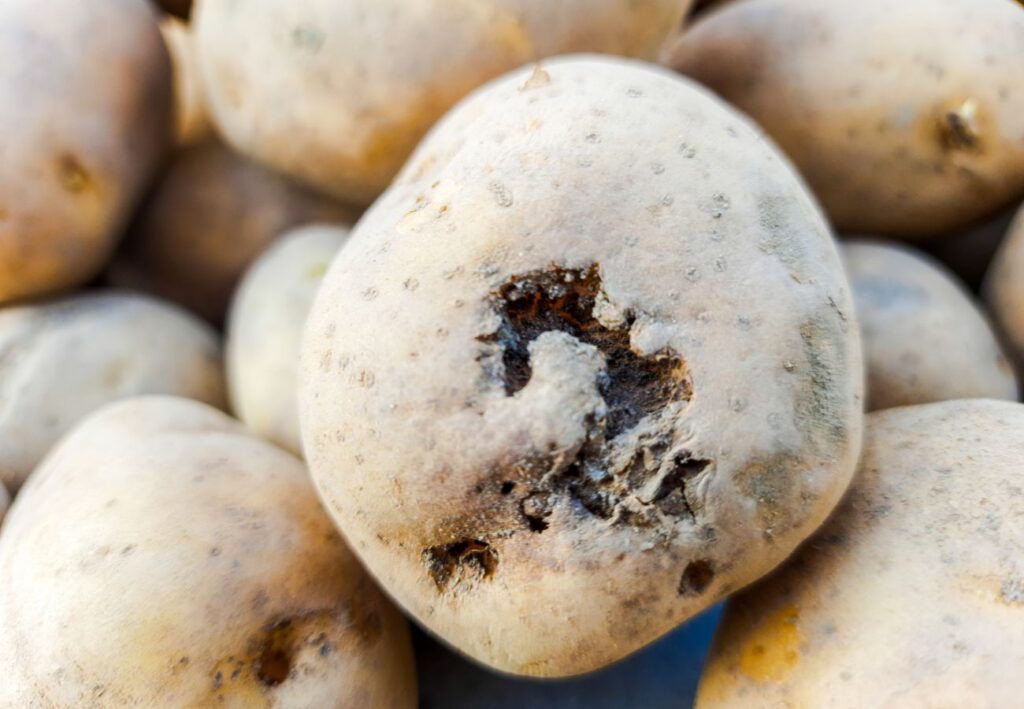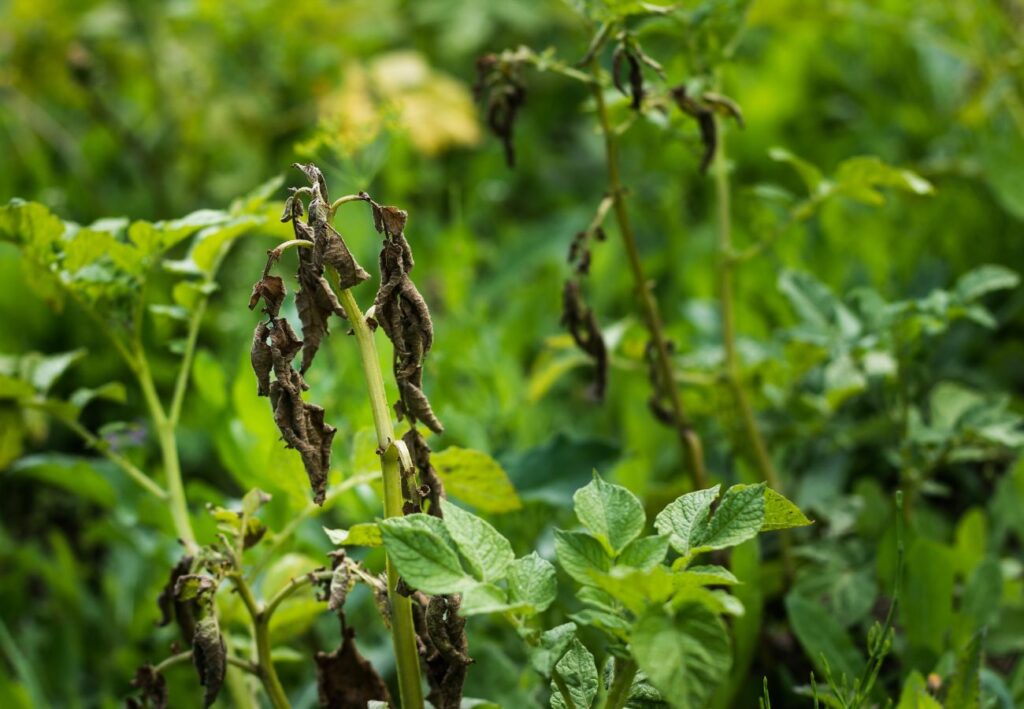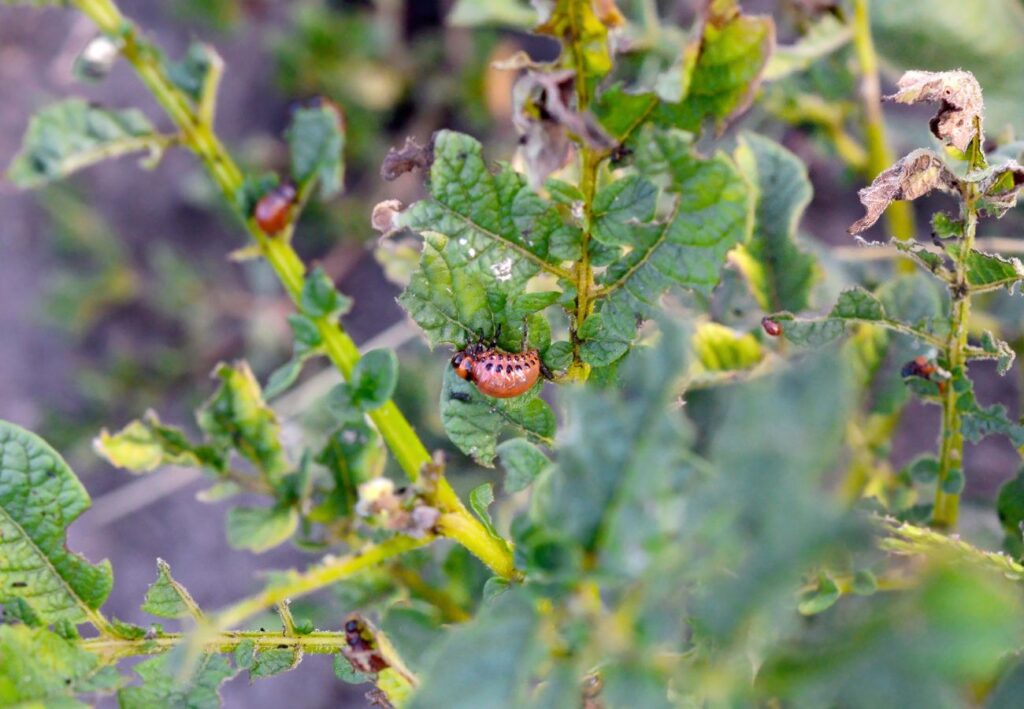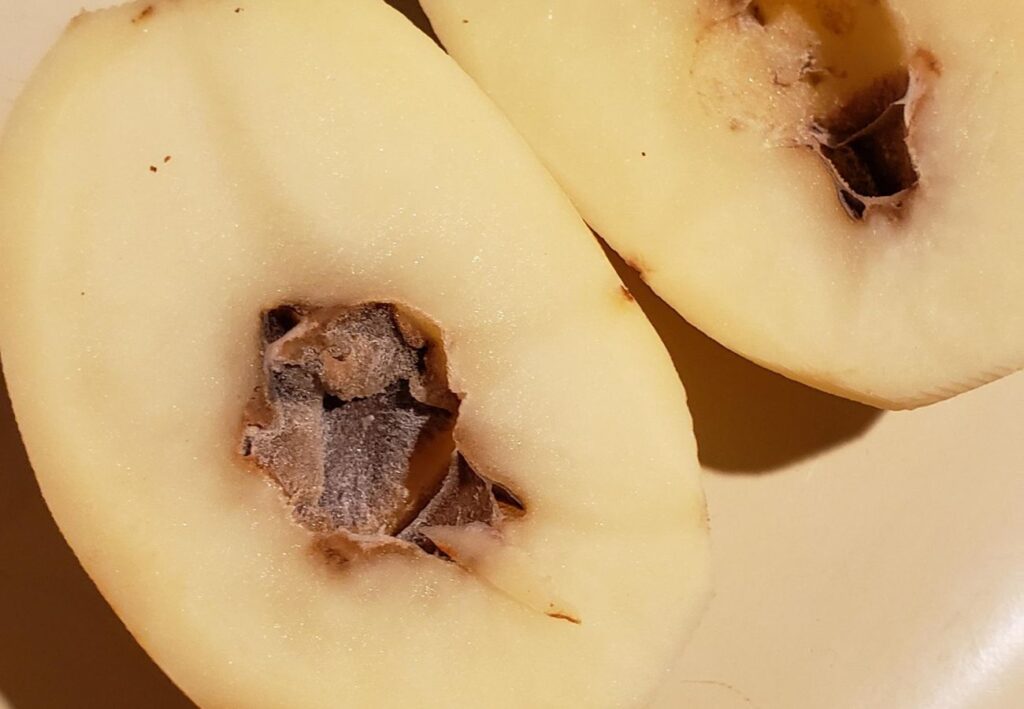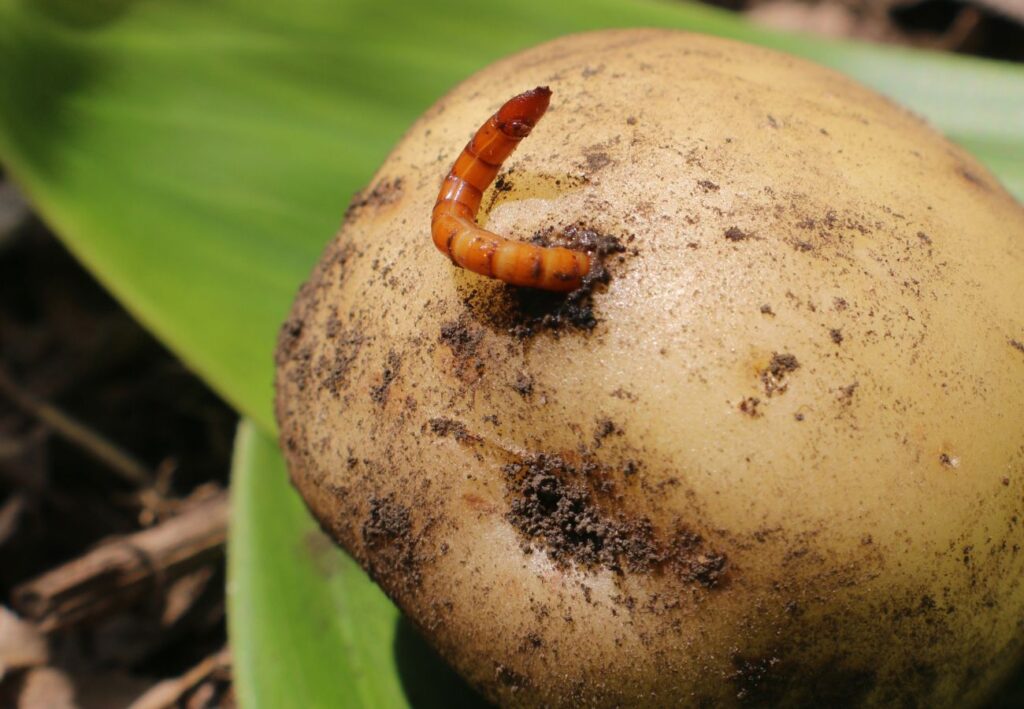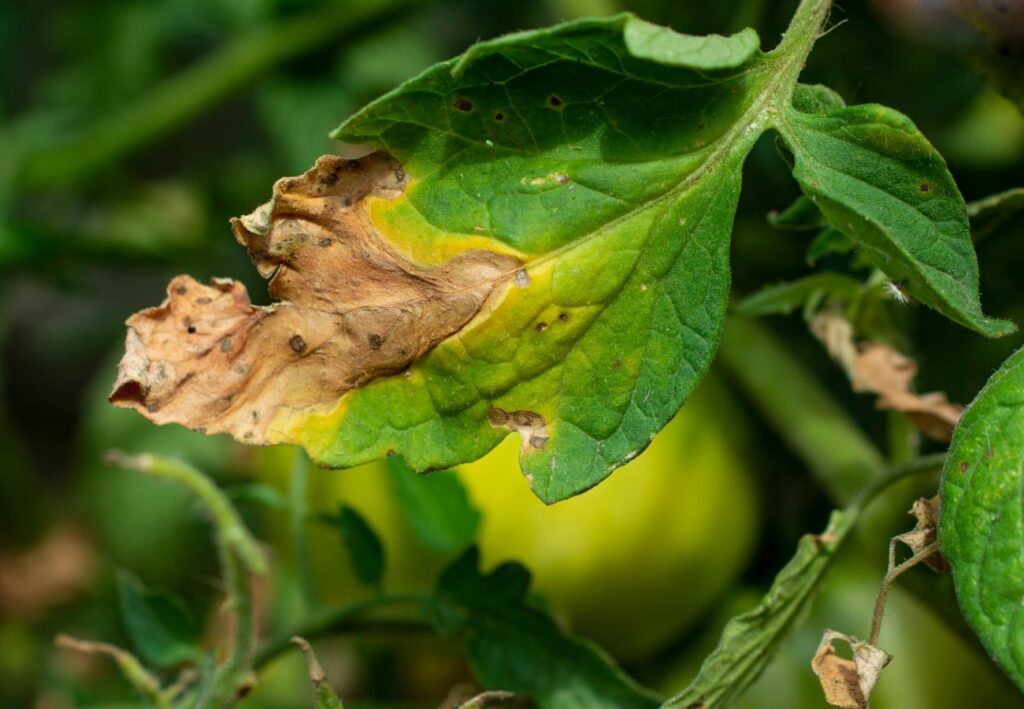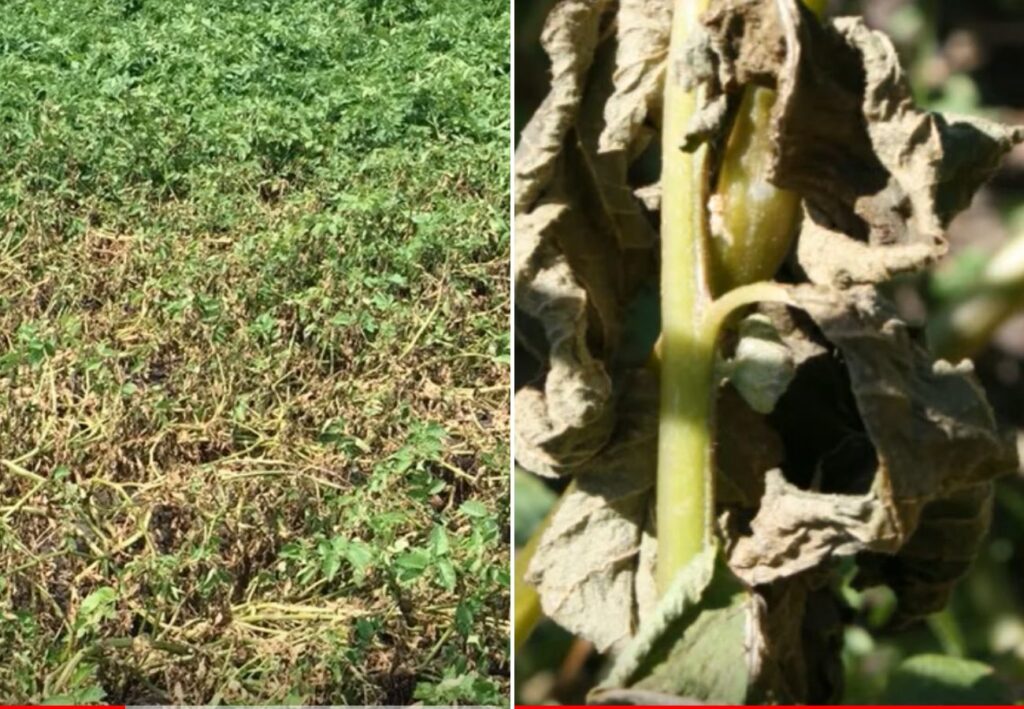Are you tired of nurturing your potato garden only to end up with lackluster yields or, worse, no potatoes at all? You’re not alone. Many gardeners face common potato-growing problems that are easy to fix with the right knowledge.
You’ll learn about pests that munch on your precious plants, diseases that can ruin your crop, and other issues like poor soil and irregular watering. These simple solutions will help you turn your potato patch into a thriving garden.
With a little guidance, you can overcome these obstacles and enjoy a bountiful harvest. Dive in to discover how to tackle these common potato-growing problems and ensure that your next batch of spuds is the best one yet.
10 Potato-Growing Problems
1. Poor Sprouting
Problem: One of the first challenges gardeners face is poor sprouting, where seed potatoes fail to produce strong, healthy shoots. This problem can arise from using old or improperly stored seed potatoes.
Solution: To avoid poor sprouting, always use certified seed potatoes that are disease-free and stored in a cool, dark place before planting. Ensure your seed potatoes are firm and not shriveled.
Before planting, allow the seed potatoes to “chit” or sprout by placing them in a bright, cool area for a few weeks until small green shoots appear. This process will help ensure strong initial growth.
2. Potato Scab
Problem: Potato scab is a common disease that causes rough, corky patches on the surface of potatoes. While it doesn’t typically affect the taste, it can make the potatoes less visually appealing and harder to peel.
Solution: The best way to prevent potato scab is by managing soil pH. Potato scab thrives in alkaline soils with a pH above 5.5. Before planting, test your soil and adjust the pH to slightly acidic levels, ideally between 5.0 and 5.5.
Additionally, avoid adding lime or wood ash to your soil, which can increase pH levels. Rotating your potato crops with other vegetables like beans or corn can also help reduce the risk of scab.
3. Late Blight
Problem: Late blight is a devastating fungal disease that can wipe out entire potato crops in a short time. It appears as dark, water-soaked lesions on leaves, stems, and tubers, eventually leading to plant collapse.
Solution: To prevent late blight, start by planting blight-resistant potato varieties. Ensure proper spacing between plants to promote air circulation, reducing humidity around the foliage. Mulching can also help keep the soil moist while reducing the risk of disease spread.
If late blight is detected, remove and destroy affected plants immediately to prevent the disease from spreading. Fungicides can be used as a preventive measure, especially in regions prone to late blight outbreaks.
4. Potato Beetles
Problem: The Colorado potato beetle is a notorious pest that feeds on potato leaves, severely damaging the plants. Both larvae and adult beetles can cause significant defoliation, leading to reduced yields.
Solution: Hand-picking beetles and their larvae from plants is one of the most effective organic control methods, especially in small gardens. You can also introduce beneficial insects like ladybugs and lacewings, which prey on potato beetle larvae.
If infestations are severe, consider using organic insecticides like neem oil or spinosad. Crop rotation and planting companion plants such as marigolds can also deter beetles.
5. Hollow Heart
Problem: Hollow heart is a physiological condition where a hollow cavity forms inside the potato, usually due to rapid growth caused by fluctuating soil moisture levels. While the potato is still edible, it can reduce the quality and marketability of your crop.
Solution: To prevent hollow heart, maintain consistent soil moisture throughout the growing season. Water your potato plants regularly, especially during dry periods, but avoid overwatering, which can lead to other issues like rot.
Mulching helps retain soil moisture and keep temperature fluctuations in check. Additionally, space your plants adequately to reduce competition for water and nutrients.
6. Wireworms
Problem: Wireworms are the larvae of click beetles and can cause significant damage by boring into potato tubers, creating unsightly holes and making the potatoes unmarketable.
Solution: Before planting, check your soil for wireworms by burying a few pieces of raw potato or carrot and checking them after a few days. If you find wireworms, consider using beneficial nematodes, which are microscopic worms that prey on wireworms.
Crop rotation with non-host crops like onions and garlic can also help reduce wireworm populations. Additionally, planting potatoes in well-drained soil can deter wireworms, as they prefer moist environments.
7. Early Blight
Problem: Early blight is another common fungal disease affecting potato plants, characterized by small, dark brown spots on older leaves, which eventually enlarge and cause leaf drop.
Solution: Preventing early blight involves similar practices to those for late blight. Start by planting disease-resistant varieties and ensuring proper spacing between plants.
Mulching and regular watering at the base of the plants can reduce the spread of spores. If early blight is detected, remove affected leaves to slow the spread. Fungicides can also be used preventively, particularly in regions with a history of early blight.
8. Irregular Watering
Problem: Inconsistent watering can lead to a variety of problems, including uneven growth, cracked tubers, and increased susceptibility to diseases like blight and rot.
Solution: Consistent watering is key to successful potato cultivation. Aim to keep the soil evenly moist, especially during the tuber formation stage. Water your potatoes deeply once or twice a week, depending on the weather and soil type.
Mulching can help retain soil moisture and reduce evaporation. Avoid overhead watering, as it can encourage the spread of fungal diseases; instead, water at the base of the plants.
9. Potato Wart
Problem: Potato wart is a soil-borne fungal disease that causes warty, tumor-like growths on the tubers, rendering them inedible. The disease can persist in the soil for many years and is highly contagious, making it a serious threat to potato crops.
Solution: The best way to prevent potato wart is by using certified, disease-free seed potatoes and avoiding planting in areas where the disease has been previously detected.
If potato wart is found in your garden, it’s crucial to remove and destroy all affected plants and avoid planting potatoes in that area for several years.
Implement strict sanitation measures, such as cleaning gardening tools and equipment, to prevent the spread of the disease. Crop rotation with non-host plants can also help reduce the risk of potato wart in future growing seasons.
10. Verticillium Wilt
Problem: Verticillium wilt is a fungal disease that affects the vascular system of potato plants, leading to yellowing and wilting of the lower leaves, followed by stunted growth and reduced yields. The fungus can persist in the soil, making it a recurring problem if not properly managed.
Solution: To manage verticillium wilt, start by planting wilt-resistant potato varieties. Rotate your crops annually, avoiding planting potatoes in the same spot for at least three years.
Improve soil health by adding organic matter and ensuring proper drainage, as the fungus thrives in poor, compacted soils.
If verticillium wilt is detected, remove and destroy the affected plants immediately. Solarizing the soil, which involves covering it with clear plastic to trap heat, can help reduce the fungal population in the soil.
By addressing these common potato-growing problems, you can set your garden up for success and enjoy a bountiful harvest. Remember, consistent care and attention to your potato plants can make all the difference in achieving healthy, productive yields.



